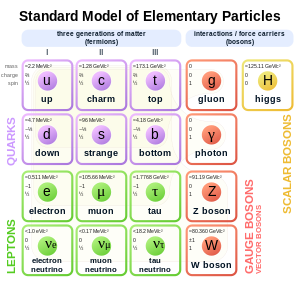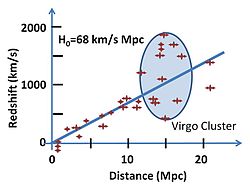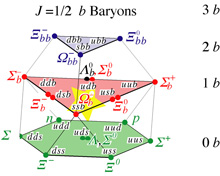 |
| Changi Airport, Singapore where we started from early in the morning. |
This is a post about something I did way back in 2008, when I was still in Singapore. Reaching the top of Mount Kinabalu has been on my to do list for a while back then and so when some friends asked me if I wanted to join them to conquer the mountain, I jumped at the chance to do so without any second thoughts. These pictures have been in Facebook for years now but I did not like their policies about sharing and privacy so I moved them out from there. Personally writing blogs do more justice to these pictures which otherwise would just gather 'cyber-dust' in a photo album in FB. Enough about my bias personal opinions about FB and on with the fantastic trip I had a few years back. For those we are not sure where this nice mountain is, here's a map of the region.
Mount Kinabalu is the fourth highest mountain in South-east Asia at 4095m above sea level. For Malaysians accustomed to the rainforest, the mountain offers different types of vegetation due to its height and local climate. Near the bottom of the mountain, you find normal rainforest and gradually up, the trees become shorter with bushes and flowers growing and slowly they change into short shrubs, mosses and lichens that grow on the rock near the summit.
We arrive via Airasia the well-known low-cost carrier from Malaysia, now flying almost all of Asia and some parts of Europe. We spent the first day exploring the city, Kota Kinabalu, after putting down our luggage in the hostel, which is along Jalan Gaya.
 |
| The hostel we stayed in along Jalan Gaya, Kota Kinabalu. As I remembered it, there were lots of rooms with some visitors from Europe. |
There were many things on sale. I remembered there was a '
kueh chap' stall below our hostel. I'm not particularly a fan of intestines or pig organ soup but most of my travel friends did enjoy them. I ate the toufu portions instead.
 |
| Pet animals for sale, a prize Persian cat here for RM1600. |
 |
| The Sunday market in Jalan Gaya. |
 |
| Some photos of Kota Kinabalu, the state capital of Sabah. |
 |
| Street view of Kota Kinabalu. Hot, dusty and smoky. Typical Malaysian city. |
 |
| Walking towards the fish market and boat harbour. We are all appreciating the shade provided by this overhead pedestrian crossing. |
There are also boats to visit the islands, Gaya, Sapi, Manukan, Sulug, Mamutik. They are popular for snorkelers and scuba divers. Perfect for a day trip to play in the nice beaches too. You will see many families with kids there. I got stung by a jellyfish in Pulau Manukan on the last day of our trip. I still bear the mark of tentacles on my leg.
 |
| Boat terminal for tourists going to the islands off Kota Kinabalu. |
Now I realized these photos are probably not in the right time order. It does not matter too much anyway. Just enjoy the pretty pictures of tropical Malaysia.
 |
| Inside a souvenir stall. Picture of a friend looking for T-shirts? |
 |
| Walking in the pathway between stalls. You can see the rattan balls on the right. We play sepak takraw with them. |
 |
| More rattan products. Happy. |
 |
| Hm... I think they are junk food, er... snacks made from deep fried fish . |
Yes, coconuts. They are aplenty in Malaysia. I think they cost like RM1 each. Please do not drink too much. You will get sick of it. Haha.
 |
| Coconut juice. Refreshing on a hot day. |
 |
| Fishing boats. |
 |
| Almost sunset over the islands. |
 |
| Its dinner time. Here you see aquariums of sea creatures like fish and prawns ready to be chosen by us to be cooked in the many ways possible. |
 |
| Coconut tree along the coast. They grow like weeds here. |
 |
| Mount Kinabalu |
 |
| Some things never change. A nice instant cup of coffee where you don't expect one. |
 |
| A map of the Mesilau path we took to go up the mountain. Takes approximately 8 hours from our starting point about 1000-2000m above sea level. Climbers must be accompanied by guides. |
 |
| View from Kundasang. |
 |
| Fruit and vegetable market in Kundasang. |
Due to its cooler climate, the farms located at this highland plateau surrounding Mount Kinabalu and the Crocker range are able to grow temperate climate vegetables like cabbages and strawberries.
 |
I think this was a picture of us just reaching our chalets at Timpohon Mesilau gate (Thanks luyee!) where we are to stay a night before our journey up the mountain. This stay was mandatory as required by Sutera Sanctuary Lodges. Since privatization of the mountain park management, everything has become expensive. |
 |
| Photo from the Mesilau trail. |
 |
| A small pitcher plant. |
 |
| Squirrel I see. |
 |
| Laban rata. The place to hang out ~800m away from the summit. We slept a little there and had to wake up in the middle of the night about 1am to start our final ascent to the top. This is so that we will be able to see the sunrise while on the peak. This is the second mandatory stop and stay. |
 |
| Our beds for six hours in Laban rata. |
 |
| A bit more! |
 |
| Sunrise. Too cloudy to see the round sun. |
 |
| Once day breaks, you see many trekkers who reached the summit. |
 |
| Above the vegetation level, there is a rope where you can use as a guide to reach the top of the mountain. |
 |
| Its a long drop down there... |
 |
| Pictures really not in order. This is a sign showing that we have made it to the summit, Low's Peak. |





























































